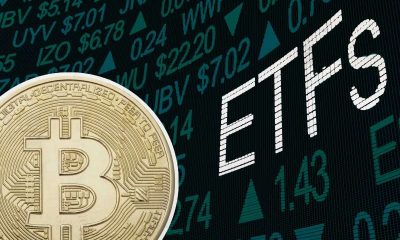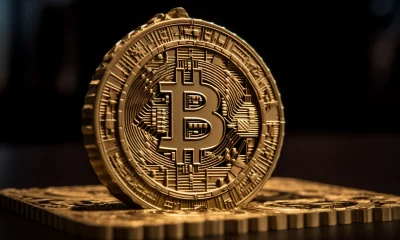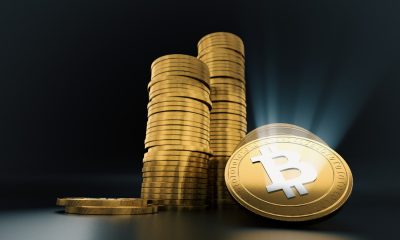Forex
U.S. stocks end lower in week dominated by Powell and rate worries
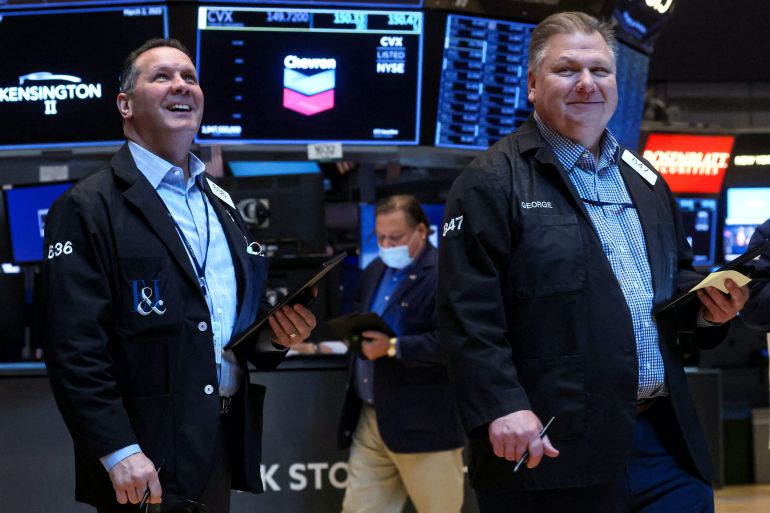
Key points:
- Main U.S. indexes end down, led by 1% drop in Nasdaq
- All S&P 500 sectors red: utilities weakest group
- Dollar, gold rise; crude off ~0.4%; bitcoin rallies >2%
- U.S. 10-Year Treasury yield falls to ~3.73%
U.S. STOCKS END LOWER IN WEEK DOMINATED BY POWELL AND RATE WORRIES (1600 EDT/2000 GMT)
Wall Street ended lower on Friday, weighed down by losses Microsoft, Tesla and other tech titans as investors assessed the likely path of Fed interest rate hikes and the risk of a recession.
This week’s trading was dominated by U.S. Federal Reserve Chairman Jerome Powell’s testimony to Congress, where he signaled more rate hikes ahead but vowed the central bank would proceed with caution.
Stocks climbed last week after the Fed kept interest rates steady and signaled it would likely raise rates another 50 basis points by year end.
San Francisco Fed Bank President Mary Daly told Reuters in an interview late on Thursday that two more rate hikes this year is a “very reasonable” projection, while echoing Powell’s call for a more caution in policy decisions.
Investors have been betting that improved inflation readings may mean the Fed raises rates only once more in 2023 and that the end of the central bank’s interest rate hiking cycle is near.
Amid uncertainty about the pace of future rat hikes, Tesla dropped 3%, while Microsoft and Nvidia each lost over 1%.
The S&P 500 lost 1.4% this week, and ended a 5-week winning streak. The Nasdaq also lost 1.4% for the week, and snapped an 8-week run of gains.
Still, the SPX is up just over 13% year-to-date, while the Nasdaq is up about 29% so far in 2023.
CHIPS RETREAT FURTHER FROM RECENT HIGHS AS NVIDIA DIPS (1316 EDT/1716 GMT)
Chip stocks are receding further on Friday, with the Philadelphia semiconductor index SOX dropping 1.4%, due in part to losses in Texas Instruments TXN and Nvidia NVDA.
Texas Instruments is dipping 2.4%, while Nvidia, the world’s most valuable semiconductor company, is slipping 0.7%. Nvidia is now down more than 2% since closing on Tuesday at its highest level ever.
Lifted by optimism around artificial intelligence, the SOX has surged 39% in 2023, although it remains down about 13% from its record high close in December 2021.
By comparison, the S&P 500 remains down around 9% from its record high close in January 2022.
Intel is actually gaining about 1% on Friday, and the maker of processors for personal computers and servers is up slightly since Wednesday, when it said its manufacturing business will work like a separate unit and will begin to generate a margin, but gave no clear timeline on when it will start scaling up and announced no new external customer for the business.
INDIVIDUAL INVESTOR PLEASED WITH THE PAUSE -AAII (1215 EDT/1615 GMT)
Optimism pulled back slightly, but remains above average for the third-straight week in the latest American Association of Individual Investors (AAII) Sentiment Survey. With this, bearish sentiment rose from its lowest level since July 2021 last week, while neutral sentiment declined.
Meanwhile, a majority of individual investors felt the Fed’s interest rate pause at its June FOMC meeting was the right thing to do.
AAII reported that bullish sentiment, or expectations that stock prices will rise over the next six months, dipped 2.3 percentage points to 42.9%. This puts optimism above its historical average of 37.5% for the third week in a row.
Bearish sentiment, or expectations that stock prices will fall over the next six months, rose 5.1 percentage points to 27.8%. At three-straight weeks, this is the longest stretch that pessimism has been below 30% since a five-week run that ended in November 2021.
Neutral sentiment, or expectations that stock prices will stay essentially unchanged over the next six months, gave up 2.7 percentage points to 29.4%. Neutral sentiment is below its historical average of 31.5% and is at a six-week low.
With these changes, the bull-bear spread narrowed to +15.1 percentage points from +22.5 percentage points last week. The bull-bear spread is above its historical average of 6.4% for the third-week in a row.
In this week’s special question, AAII asked its members what they thought about the Federal Reserve’s decision to pause interest rate hikes. Here are the responses:
Pausing was the right decision: 67.7%
They should have raised interest rates: 24.5%
They should have cut interest rates: 2.5%
Not sure/no opinion: 5.1%
SERVICES WITH A SMILE, FACTORIES WITH A GRIMACE: FLASH PMI UNDERSCORES DEMAND DIVERGENCE (1100 EDT/1500 GMT)
S&P Global unveiled its initial “flash” June purchasing managers’ index (PMI) readings for the manufacturing and services sectors.
The manufacturing print (USMPMP=ECI) unexpectedly shed 2.1 points to land at 46.3, thereby dipping further into contraction territory and touching a six-month low.
For its part, services activity (USMPSP=ECI) accelerated by a hair, adding 0.1 point to 54.1.
A PMI figure north of 50 indicates monthly expansion; a number below that level signifies a decrease from the prior month.
A side-by-side comparison of manufacturing and services provides a clear indication as to which direction the demand pendulum is currently swinging, and recent data suggests consumers continue to invest in “experiences,” from food and drink services to travel and hospitality.
Taken together, the flash composite lost a bit of momentum, giving up 1.3 points to 53, safely within expansion the zone.
“While improving supply conditions had helped boost manufacturing production in prior months, an increasingly severe downturn in new orders mean factories are running out of work,” writes Chris Williamson, chief business economist at S&P Global Market Intelligence.
“The situation is brighter in the service sector, where demand is proving resilient and the recent pause in rate hikes appears to have helped boost business optimism for the year ahead,” he adds.
Even so, labor market tightness remains a significant headwind for the booming services sector.
“The tightness of the labor market remains a concern, and upward wage pressure remains a key driver of higher costs in the service sector,” Williamson says. “However, it is encouraging to see the overall rate of selling price inflation for goods and services drop to the lowest since late 2020 in a sign that the Fed is winning its fight against inflation.”
Silver lining spotters will note that on the manufacturing side, input prices – an inflation harbinger – have contracted this month at their sharpest rate since May 2020, when the global economy was knocked for a loop by pandemic-related shutdowns.
S&P 500, NASDAQ WEEKLY WINNING STREAKS IN JEOPARDY (1002 EDT/1402)
Wall Street’s main indexes are lower early on Friday as investor sentiment remains dampened due to the hawkish interest-rate outlook by Federal Reserve Chair Jerome Powell in his two-day congressional testimony.
Nearly every S&P 500 SPX sector is falling. Tech and consumer discretionary are taking the biggest hits, while defensives groups are showing resilience. Utilities and real estate are in positive territory.
With the weakness, the is on track to end a five-week winning streak, while the Nasdaq Composite IXIC is on pace to end an eight-week run of gains. The DJI may close lower for a third-straight week.
Like the Nasdaq, the FANG index is also in jeopardy of ending an eight-week run of gains.
NASDAQ COMPOSITE: ON THE BACK FOOT (0900 EDT/1300 GMT)
The Nasdaq Composite IXIC essentially tagged a resistance barrier last week. Since then, the tech-laden index has turned to the downside. Meanwhile, one measure of the Nasdaq’s internal strength has faltered.
Last Friday, the IXIC stalled at a high of 13,864.061, which was just shy of the 61.8% Fibonacci retracement of the Nov. 2021-Oct. 2022 decline at 13,873.09. The Composite has since declined, selling off as much as 3.1% into Thursday’s early low.
The tech-laden index did manage to snap back, however, and end higher on Thursday, though e-mini Nasdaq 100 futures are suggesting there will be a resumption of weakness at Friday’s open.
Of note, last Friday, the Nasdaq New High/New Low index (NH/NL) index rose to 67.1%, which was its highest reading since February 14 of this year. However, it has since fallen to 59.8% and on Thursday it ended below its rising 10-day moving average (DMA), which finished at 60.8%, for the first time since May 8.
It now remains to be seen just how deep a retreat lies ahead for this measure, but until it stabilizes and reclaims its 10-DMA, the Composite may struggle to keep off the back foot.
The IXIC does have support in the 13,181-13150 area which includes the mid-August 2022 high, and the 50% retracement of the Nov. 2021-Oct. 2022 decline. The June 7 low was at 13,089.482.
These levels are around 3.3%-4% below Thursday’s IXIC close.
Forex
Asia FX weak ahead of US inflation; yen dips as BOJ gives little support
Investing.com– Most Asian currencies weakened on Friday, while the dollar steadied in anticipation of key inflation data that is expected to factor into the Federal Reserve’s stance on interest rate cuts.
While an overnight drop in the dollar- following weaker-than-expected U.S. gross domestic product data- offered some relief to Asian units, this was largely offset by persistent bets on higher-for-longer U.S. interest rates. The dollar also trimmed some of its losses in Asian trade.
Japanese yen weakens, USDJPY crosses 156 after BOJ
The Japanese yen was an underperformer, with the pair rising past 156 to new 34-year highs after comments from the Bank of Japan sparked doubts over just how much capacity the central bank had to raise interest rates further.
The BOJ after a historic hike in March. The central bank also forecast higher inflation in the coming years.
But the BOJ also , raising doubts over just how much capacity it would have to keep raising interest rates. This presented a largely dovish outlook for the yen.
Softer-than-expected – released earlier on Friday- further sparked doubts over a hawkish BOJ.
Still, losses in the yen were limited by continued fears of government intervention in currency markets. An upcoming press conference with BOJ Governor , at 02:30 ET (06:30 GMT) also presented the possibility of more hawkish signals.
Broader Asian currencies also weakened on Friday, amid persistent fears of higher-for-longer U.S. interest rates. The Chinese yuan’s pair rose slightly and remained close to recent five-month highs.
remove ads
.
South Korea’s pair rose 0.4%, while the Singapore dollar’s pair added 0.1%.
The Australian dollar’s pair was supported by strong inflation data, which, coupled with higher earlier this week, sparked bets on higher-for-longer rates in the country.
The Indian rupee’s pair moved little, with traders growing wary of more volatility in Indian markets as the 2024 general elections began.
Dollar steadies with PCE inflation on tap
The and rose marginally in Asian trade, recovering some overnight losses.
showed growth in the U.S. economy cooled more than expected in the first quarter, amid sticky inflation and high rates.
But inflation remained uncomfortably high, with the growing more than expected.
This put upcoming data squarely in focus. The reading is the Federal Reserve’s preferred inflation gauge.
Despite Thursday’s weak GDP reading, traders were seen steadily pricing out expectations for any near-term rate cuts by the Fed. The now shows traders pricing in rate cuts only by September, or the fourth quarter.
Forex
Explainer-What would Japanese intervention to boost a weak yen look like?

By Leika Kihara
TOKYO (Reuters) -Japanese authorities are facing renewed pressure to combat a sustained depreciation in the yen, as traders drive down the currency on expectations that any further interest rate hikes by the central bank will be slow in forthcoming.
Below are details on how yen-buying intervention works:
LAST CONFIRMED YEN-BUYING INTERVENTION?
Japan bought yen in September 2022, its first foray in the market to boost its currency since 1998, after a Bank of Japan (BOJ) decision to maintain its ultra-loose monetary policy drove the yen as low as 145 per dollar. It intervened again in October after the yen plunged to a 32-year low of 151.94.
WHY STEP IN?
Yen-buying intervention is rare. Far more often the Ministry of Finance has sold yen to prevent its rise from hurting the export-reliant economy by making Japanese goods less competitive overseas.
But yen weakness is now seen as problematic, with Japanese firms having shifted production overseas and the economy heavily reliant on imports for goods ranging from fuel and raw materials to machinery parts.
WHAT HAPPENS FIRST?
When Japanese authorities escalate their verbal warnings to say they “stand ready to act decisively” against speculative moves, that is a sign intervention may be imminent.
Rate checking by the BOJ – when central bank officials call dealers and ask for buying or selling rates for the yen – is seen by traders as a possible precursor to intervention.
WHAT HAPPENED SO FAR?
Finance Minister Shunichi Suzuki told reporters on March 27 that authorities could take “decisive steps” against yen weakness – language he hasn’t used since the 2022 intervention.
remove ads
.
Hours later, Japanese authorities held an emergency meeting to discuss the weak yen. The meeting is usually held as a symbolic gesture to markets that authorities are concerned about rapid currency moves.
After the warnings failed to arrest the yen’s fall, South Korea and Japan won acknowledgement from the United States over their “serious concerns” about their currencies’ declines in a trilateral meeting held in Washington last week.
The market impact of the agreement did not last long. The dollar continued its ascent and notched a 34-year high of 155.74 yen on Thursday, driving past the 155 level seen as authorities’ line in the sand for intervention.
NEXT LINE IN THE SAND?
Authorities say they look at the speed of yen falls, rather than levels, and whether the moves are driven by speculators, to determine whether to step into the currency market.
While the dollar has moved above the psychologically important 155 level, the recent rise has been gradual and driven mostly by U.S.-Japanese interest rate differentials. That may make it hard for Japan to argue that recent yen falls are out of line with fundamentals and warrant intervention.
Some market players bet Japanese authorities’ next line in the sand could be 160. Ruling party executive Takao Ochi told Reuters the yen’s slide towards 160 or 170 to the dollar could prod policymakers to act.
WHAT’S THE TRIGGER?
The decision is highly political. When public anger over the weak yen and a subsequent rise in the cost of living is high, that puts pressure on the administration to respond. This was the case when Tokyo intervened in 2022.
remove ads
.
Prime Minister Fumio Kishida may feel the need to prevent further yen falls from pushing up the cost of living with his approval ratings faltering ahead of a ruling party leadership race in September.
But the decision would not be easy. Intervention is costly and could easily fail, given that even a large burst of yen buying would pale next to the $7.5 trillion that change hands daily in the foreign exchange market.
HOW WOULD IT WORK?
When Japan intervenes to stem yen rises, the Ministry of Finance issues short-term bills, raising yen it then sells to weaken the Japanese currency.
To support the yen, however, the authorities must tap Japan’s foreign reserves for dollars to sell for yen.
In either case, the finance minister issues the order to intervene and the BOJ executes the order as the ministry’s agent.
CHALLENGES?
Japanese authorities consider it important to seek the support of Group of Seven partners, notably the United States if the intervention involves the dollar.
Washington gave tacit approval when Japan intervened in 2022, reflecting recent close bilateral relations.
Finance Minister Suzuki said last week’s meeting with his U.S. and South Korean counterparts laid the groundwork to act against excessive yen moves, a sign Tokyo saw the meeting as informal consent by Washington to intervene as needed.
U.S. Treasury Secretary Janet Yellen said currency interventions should occur only in “very rare and exceptional circumstances,” when markets are disorderly with excessive volatility. She declined to comment on the yen’s value.
A looming U.S. presidential election may complicate Japan’s decision on whether and when to intervene.
remove ads
.
In a social media post on Tuesday, Republican presidential candidate Donald Trump decried the yen’s historic slide against the dollar, calling it a “total disaster” for the United States.
There is no guarantee intervention will effectively shift the weak-yen tide, which is driven largely by expectations of prolonged low interest rates in Japan. BOJ Governor Kazuo Ueda has dropped hints of another rate hike but stressed that the bank will tread cautiously given Japan’s fragile economy.
Forex
Dollar sags after mixed US growth and inflation report, except against yen
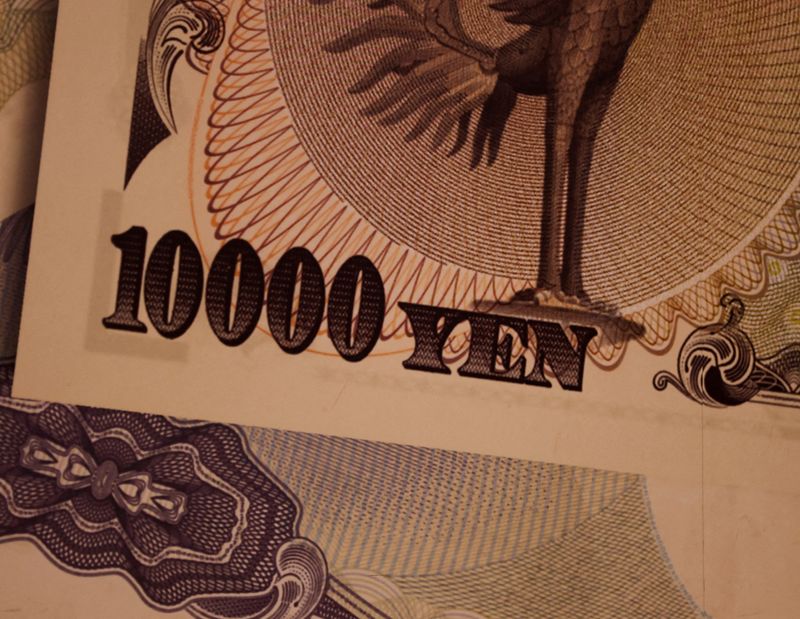
By Alden Bentley and Gertrude Chavez-Dreyfuss
NEW YORK (Reuters) -The U.S. dollar fell on Thursday, except against the yen, vacillating after data showed unexpected slowing in economic growth and an unwelcome inflation acceleration, potentially tying the Federal Reserve’s hands on a pivot to easier interest rates.
While the dollar was hardly shaken against the beleaguered yen, it otherwise only popped briefly after the Commerce Department reported that U.S. gross domestic product grew at a 1.6% annualized rate in the January-March period, slower than the 2.4% rate expected by economists polled by Reuters.
The report also showed that underlying inflation as measured by the core personal consumption expenditures (PCE) price index rose 3.7% in the first quarter, eclipsing forecasts for a 3.4% rise.
The inflation surprise puts an even greater-than-usual focus on the release on Friday of PCE price index data for March. The PCE index, and core PCE index factoring out food and energy prices are among the Fed’s most important gauges of price behavior. Inflation remains stubbornly above the U.S. central bank’s 2% inflation target.
“The market reaction to the (GDP) data tells all you need to know about what investors are focused on and it’s mostly inflation and not growth,” said Boris Kovacevic, global market strategist at Convera in Vienna, Austria.
“The print on the 3.7% PCE does suggest that tomorrow’s PCE number will be higher.”
The yen, meanwhile, hit a fresh 34-year low versus the dollar and a 16-year low against the euro on Thursday as investors expect a Bank of Japan (BOJ) policy meeting that ends on Friday to not be hawkish enough to support the Japanese currency.
remove ads
.
The , a measure of the U.S. currency’s value against six rivals, reversed a small overnight loss after the data caused benchmark Treasury yields to rise, topping at 106.00. It was last at 105.60, off 0.21%.
Conversely, the greenback fell as low as 155.31 yen after the GDP data, but quickly reversed to stand 0.19% higher at 155.63.
It peaked at a 34-year high of 155.75 yen, while the euro/yen pairing surged to 167.025, a 16-year peak.
Investors guessed the dollar/yen 155 level would be a line in the sand for Japanese authorities, above which the BOJ could intervene to shore up the currency. But it’s a moving target and the market has been on high alert for such central bank action since the yen fell below 152 per dollar about two weeks ago.
“I think that Japanese officials have been very clear that they are not really looking at a particular level,” said Marc Chandler chief market strategist, at Bannockburn Global Forex in New York.
“We should expect a hawkish hold from the BOJ where they hold policy and they talk about how the weakness of the yen could contribute to inflation and which they’d respond to.”
The euro went up 0.26% to $1.0725. Sterling strengthened 0.35% to $1.2504.
Following the GDP data, the U.S. rate futures market was pricing in a 58% chance of a Fed rate cut in September, down from 70% late on Wednesday, according to CME Group’s (NASDAQ:) FedWatch tool.
Rate futures traders on Thursday were factoring in a 68% chance that the Fed’s first rate cut since 2020 could happen at its meeting in November.
remove ads
.
“The inflation figures … potentially even point to the need for a further tightening,” said Stuart Cole, chief macro economist, at Equiti Capital in London. “We know that returning CPI (consumer price index) to target is the Fed’s main objective and therefore, on balance, today’s figure probably pushes an interest rate cut further down the road.”
In cryptocurrencies, bitcoin gained 0.80% at $64,492.00. rose 0.94% at $3158.95.

 Forex2 years ago
Forex2 years agoForex Today: the dollar is gaining strength amid gloomy sentiment at the start of the Fed’s week

 Forex2 years ago
Forex2 years agoHow is the Australian dollar doing today?

 Forex1 year ago
Forex1 year agoUnbiased review of Pocket Option broker

 Forex2 years ago
Forex2 years agoDollar to pound sterling exchange rate today: Pound plummeted to its lowest since 1985

 Cryptocurrency2 years ago
Cryptocurrency2 years agoWhat happened in the crypto market – current events today

 World2 years ago
World2 years agoWhy are modern video games an art form?

 Stock Markets2 years ago
Stock Markets2 years agoMorgan Stanley: bear market rally to continue

 Economy2 years ago
Economy2 years agoCrude oil tankers double in price due to EU anti-Russian sanctions

